WORKSHEET ON LOCUS
Subscribe to our ▶️ YouTube channel 🔴 for the latest videos, updates, and tips.
Problem 1 :
Draw point C on a piece of paper. Draw and describe the locus of all points on the paper that are e inches from c.
Problem 2 :
Points A and B lie in a plane. What is the locus of points in the plane that are equidistant from points A and B and are a distance of AB from B ?
Problem 3 :
Point P is in the interior of ∠ABC. What is the locus of points in the interior of ∠ABC that are equidistant from both sides of ∠ABC and 2 inches form P ? How does the location of P within ∠ABC affect the locus ?
Problem 4 :
We have the following readings of an earthquake from three seismographs.
(i) At A(-5, 5), the epicenter is 4 miles away.
(ii) At B(-4, -3.5), the epicenter is 5 miles away.
(iii) At C(1, 1.5), the epicenter is 7 miles away.
Where is the epicenter ?
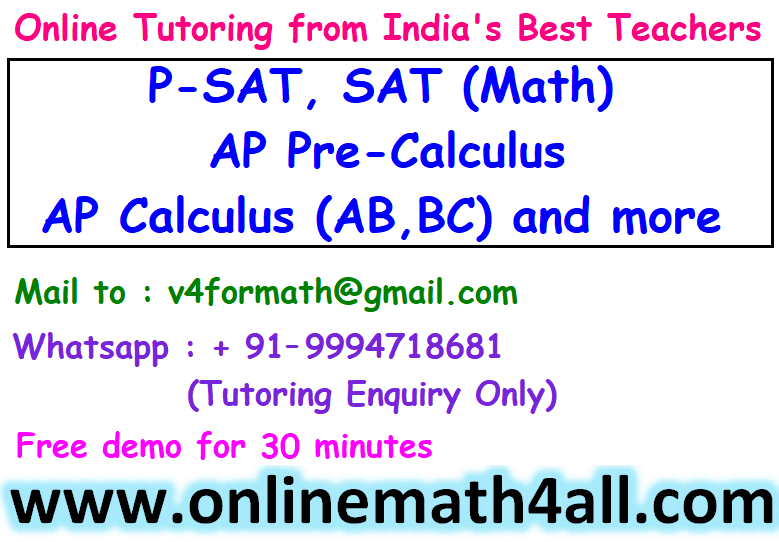
Answers
Problem 1 :
Draw point C on a piece of paper. Draw and describe the locus of all points on the paper that are e inches from c.
Solution :
Step 1 :
Draw point C. Locate several points e inches
from C.
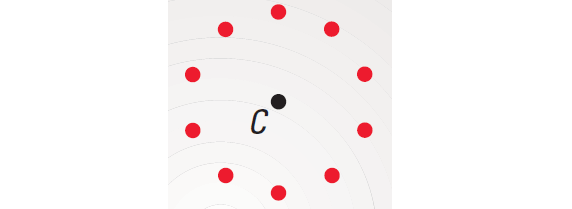
Step 2 :
Recognize a pattern: the points lie on a circle.
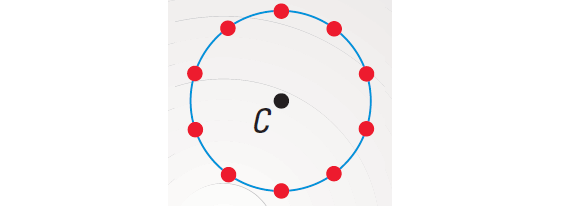
Step 3 :
Draw the circle using compass as shown below.
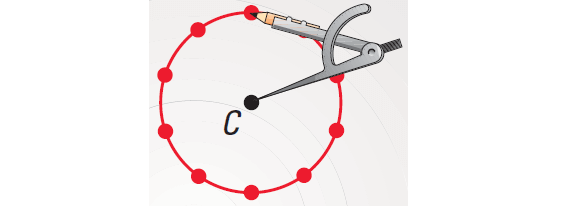
The locus of points on the paper that are e inches from C is a circle with center C and a radius of 3 inches.
Problem 2 :
Points A and B lie in a plane. What is the locus of points in the plane that are equidistant from points A and B and are a distance of AB from B ?
Solution :
The locus of all points that are equidistant from A and B is the perpendicular bisector of AB as shown below.
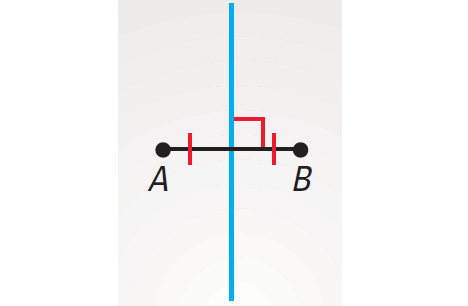
The locus of all points that are a distance of AB from B is the circle with center B and radius AB as shown below.
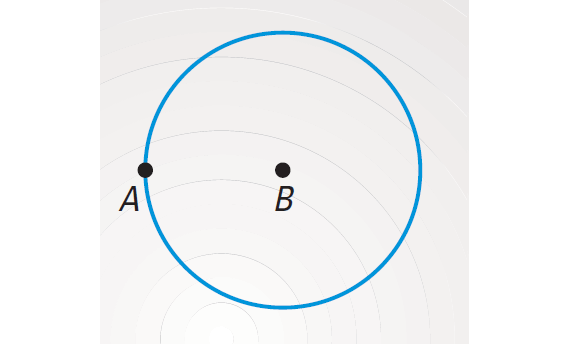
These loci intersect at D and E. So D and E are the locus of points that satisfy both conditions.
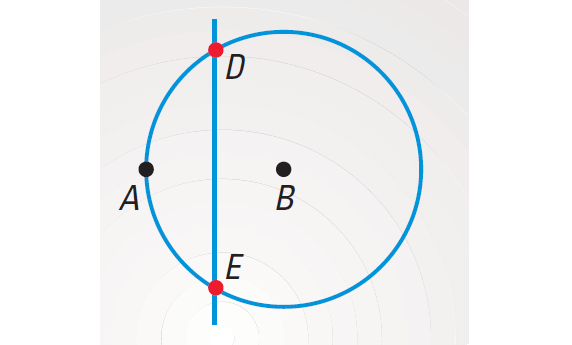
Problem 3 :
Point P is in the interior of ∠ABC. What is the locus of points in the interior of ∠ABC that are equidistant from both sides of ∠ABC and 2 inches form P ? How does the location of P within ∠ABC affect the locus ?
Solution :
The locus of points equidistant from both sides of ∠ABC is the angle bisector. The locus of points 2 inches form P is a circle. The intersection of the angle bisector and the circle depends on the location of P. The locus can be 2 points, 1 point, or 0 points.
The locus is two points :
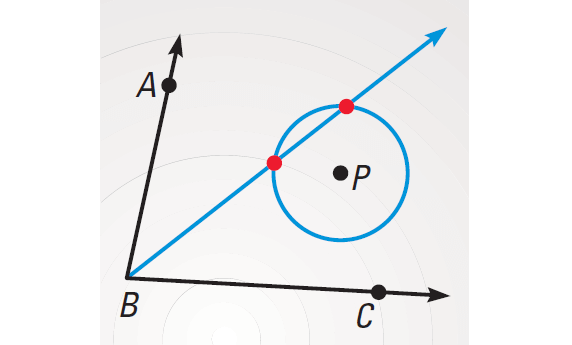
The locus is one point :
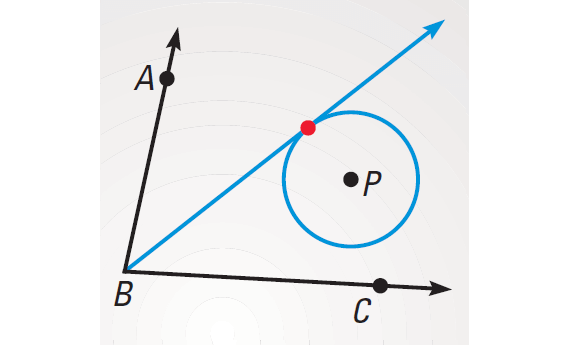
The locus is zero points :
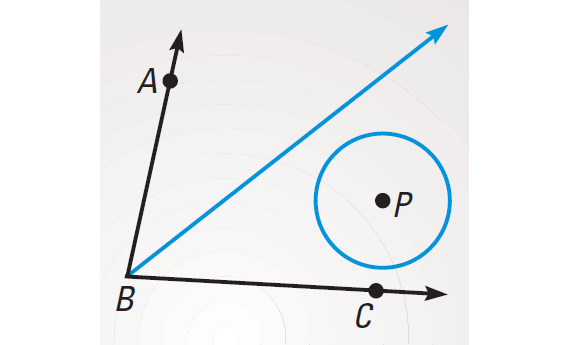
Problem 4 :
We have the following readings of an earthquake from three seismographs.
(i) At A(-5, 5), the epicenter is 4 miles away.
(ii) At B(-4, -3.5), the epicenter is 5 miles away.
(iii) At C(1, 1.5), the epicenter is 7 miles away.
Where is the epicenter ?
Solution :
Each seismograph gives us a locus that is a circle.
So, we have
Circle A has center (-5, 5) and radius 4
Circle B has center (-4, -3.5) and radius 5
Circle C has center (1, 1.5) and radius 7
Draw the three circles in a coordinate plane. The point of intersection of the three circles is the epicenter.
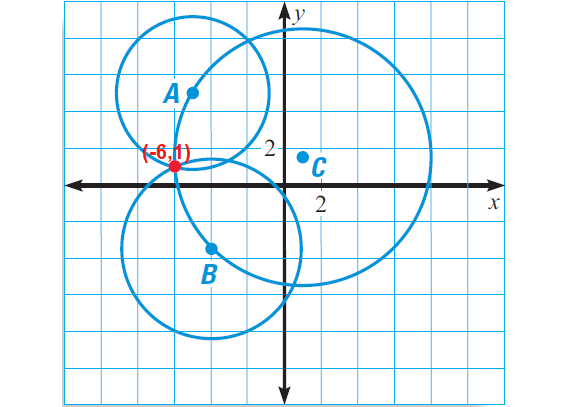
In the diagram above, three circles intersect at (-6, 1).
The epicenter is at about (-6, 1).
Subscribe to our ▶️ YouTube channel 🔴 for the latest videos, updates, and tips.
Kindly mail your feedback to v4formath@gmail.com
We always appreciate your feedback.
About Us | Contact Us | Privacy Policy
©All rights reserved. onlinemath4all.com
Recent Articles
-
Quantitative Reasoning Questions and Answers
Dec 14, 25 06:42 AM
Quantitative Reasoning Questions and Answers -
Specifying Units of Measure
Dec 14, 25 06:38 AM
Specifying Units of Measure -
Coin Tossing Probability
Dec 13, 25 10:11 AM
Coin Tossing Probability - Concept - Sample Space - Formula - Solved Problems